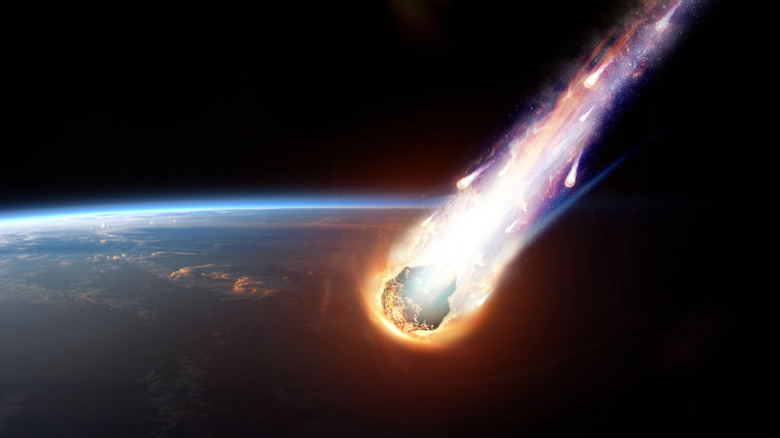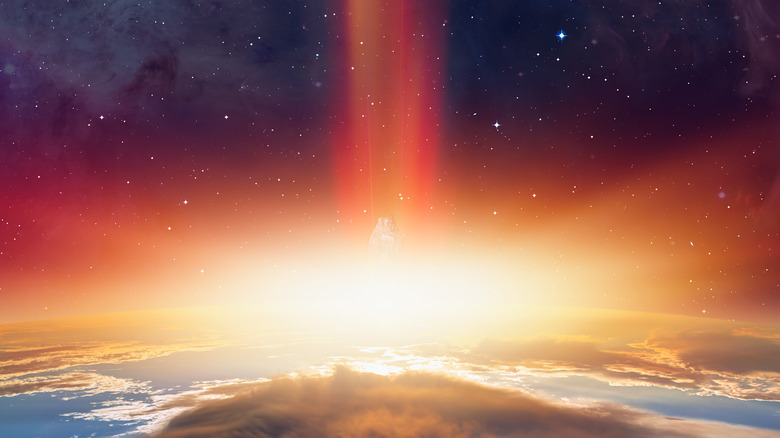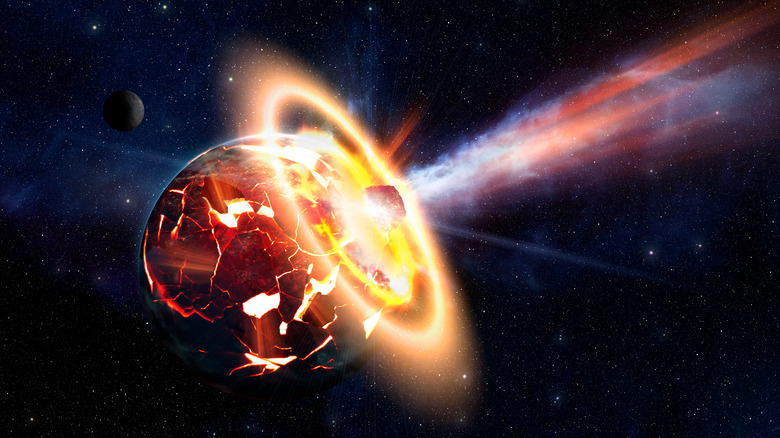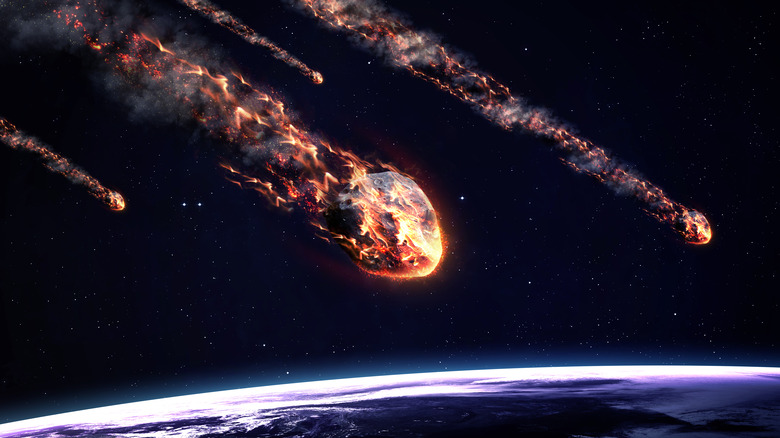Why Some Scientists Predict Comets Might End The World
Earth's lifetime is not infinite, as the Blue Marble will eventually be swallowed up by the Sun millions of years into the future. It's likely that life on our planet won't make it to that apocalypse, however, but scientists aren't sure what the most probable global doom will be. If our demise isn't caused by our own species, many scientists predict the fate of humanity lies in forces from the cosmos. One popular theory has already happened — and nearly wiped out life on Earth: impact from an asteroid.
According to Listverse, 66 million years ago saw the demise of the dinosaurs in the impact and aftermath of a comet smashing into the Earth with an explosive force not seen since. The cataclysm saw 3/4 of all life on the planet extinguished in one of the largest mass-extinction events in history. It would only take an asteroid or comet a few dozen miles across to impact the wrong area of our planet and cause another mass extinction that we would not be equipped to handle. While there have been impacts since that fateful explosion 66 million years ago, none have come close to replicating the destruction caused by the rock that killed the dinosaurs. Earth has seen its share of close calls, however: an asteroid in 2020 came within less than 300 miles of Earth, narrowly avoiding what would have been a fitting end to a catastrophic year.
The impact would only be the start of destruction
Comets and asteroids are not the same thing; one main difference is that comets are usually made of ice, rock, and dust, while asteroids usually contain rocks and metals. Both comets and asteroids can come from inside or outside of our solar system, but most of the asteroids we encounter come from our own asteroid belt. Another big difference is that comets travel at much higher speeds. The difference in their speeds has a huge effect on how devastating an impact can be.
When a large astronomical object strikes, so much dust and debris is launched into the atmosphere that the sunlight can be blacked out, lowering global temperatures and killing millions of organisms (via Space Camp Turkey). The asteroids don't need to be particularly massive to cause devastation either. The 1908 Tunguska impact, the largest impact event in modern history that thankfully struck an isolated Siberian forest, involved an object that was roughly 130 feet in diameter, yet flattened trees in an area the size of London. If the object were a few hundred feet wider, entire countries can be flattened from the shockwave. Those victims would be the lucky ones as the global temperatures plummet. Scientists are worried about such a possibility, given that there are no real defenses in place to divert or destroy an asteroid. We've been lucky enough so far, but who knows how much longer Earth has before that luck runs out.
Wind and shockwaves would cause the most deaths
According to Vox, scientists conducted tens of thousands of different asteroid-impact simulations to determine how much asteroid size and area of impact has an effect on human casualties. While noting that asteroids big enough to cause global calamities strike at a rate of about two every 1 million years, the researchers hope to use the data to better understand what would happen in a worst-case scenario. Perhaps surprisingly, those who die from the direct impact, seismic activity, and ejected debris would make up only a tiny fraction of total deaths. The biggest killer? Wind.
Wind is such a big potential killer because the asteroid could actually explode in the air before it reaches the ground. If such an explosion occurred over water, it would potentially result in tsunamis and shockwaves that could flatten cities around the world, with pressure that could maim those unfortunate to be close by.
Researchers are figuring out the best defense plans
So, how do we defend against an asteroid or comet wiping out cities and causing billions of dollars in damage? While an apocalypse-threatening asteroid is highly unlikely to strike within any of our lifetimes, an Eiffel-Tower-sized rock is going to just miss Earth in 2029 and 2036 (via MIT). An impact is much less likely than initially feared, but it inspired MIT researchers to look into the best ways to defend against asteroid impacts. The process would depend a lot on the asteroid's speed, mass, and whether it has crossed the "gravitational keyhole" to put it on track to collide with Earth's surface.
Early suggestions included attacking an asteroid with a nuclear bomb, or a rocket strike that would veer it off course, similar to a billiards shot. Other scientists are focusing on methods to deflect asteroids before they cross the keyhole at all. This would include sending "scout" drones to get accurate measurements of the meteor and slightly nudge it off course, then hit it with another strike just before it enters the keyhole using the data collected by the scout. The exact course of action that would be taken should something extinction-level come our way is yet to be fully confirmed, and very likely none of us would ever live to see it used in action, but perhaps one day, centuries or millennia down the line, humanity will need to come together to save ourselves from planetary doom.



